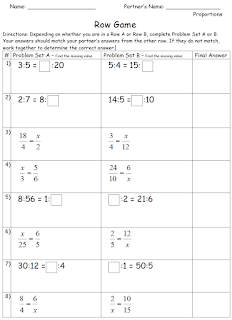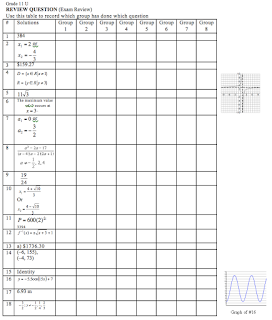 We saw this activity in 2010 when I first found
We saw this activity in 2010 when I first found MFM1P, MPM1D
- illustrate equivalent ratios, using a variety of tools
- solve for the unknown value in a proportion, using a variety of methods
- make comparisons using unit rates
- solve problems involving ratios, rates, and directly proportional relationships in various contexts, using a variety of methods
- solve problems requiring the expression of percents, fractions, and decimals in their equivalent forms
- add and subtract polynomials involving the same variable up to degree three, using a variety of tools
- multiply a polynomial by a monomial involving the same variable to give results up to degree three
- solve first-degree equations with non fractional (Applied only) coefficients, using a variety of tools and strategies
- Just the handouts (see below)
- Pair students up
- Have students decide who will be Student A or Student B, and have them complete Problem Set A or B.
- The answers in each row should match. If they do not match, work together to determine the correct answer.
- See the files in one folder here
- Proportions (Word, PDF)
- Proportions Review (Word, PDF)
- Simplifying Expressions (Word, PDF)
- Adding Polynomials (Word, PDF)
- Simplifying Expressions with Multiplication (Word, PDF)
- Solving Equations (Word, PDF)
- Solving Multistep Equations (Word, PDF)



